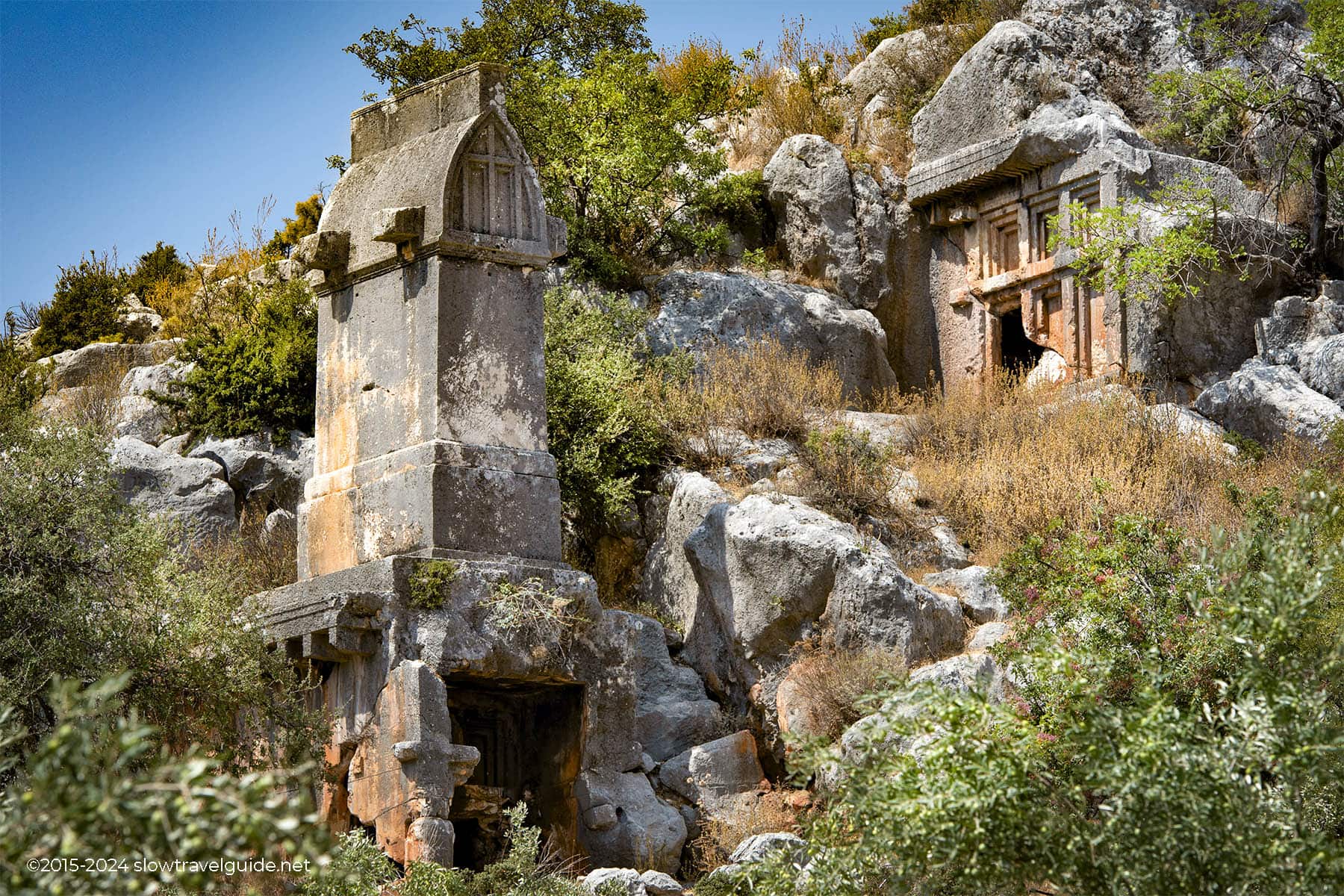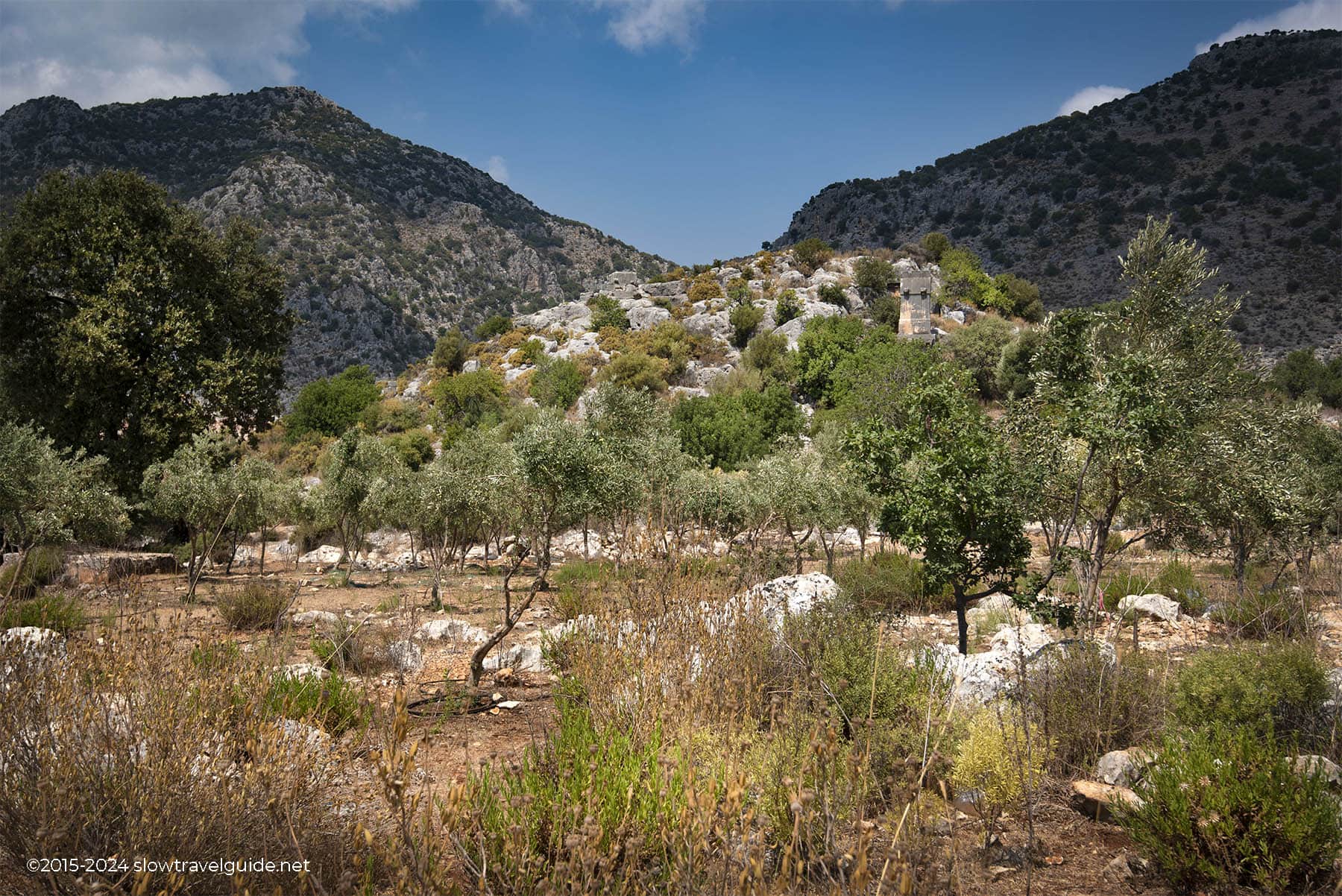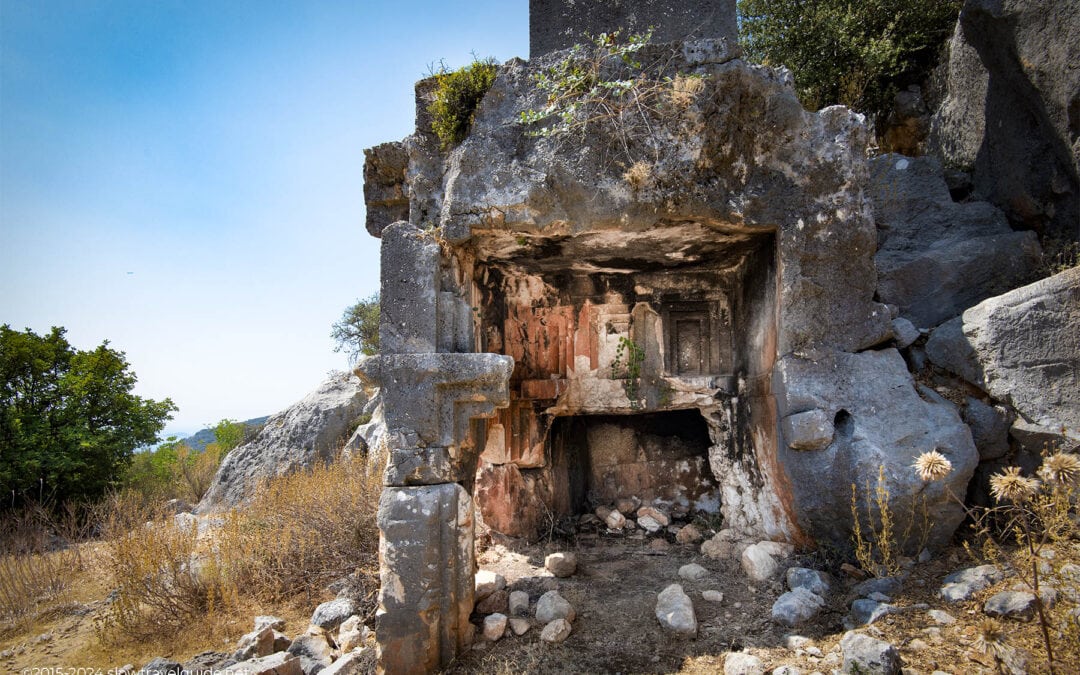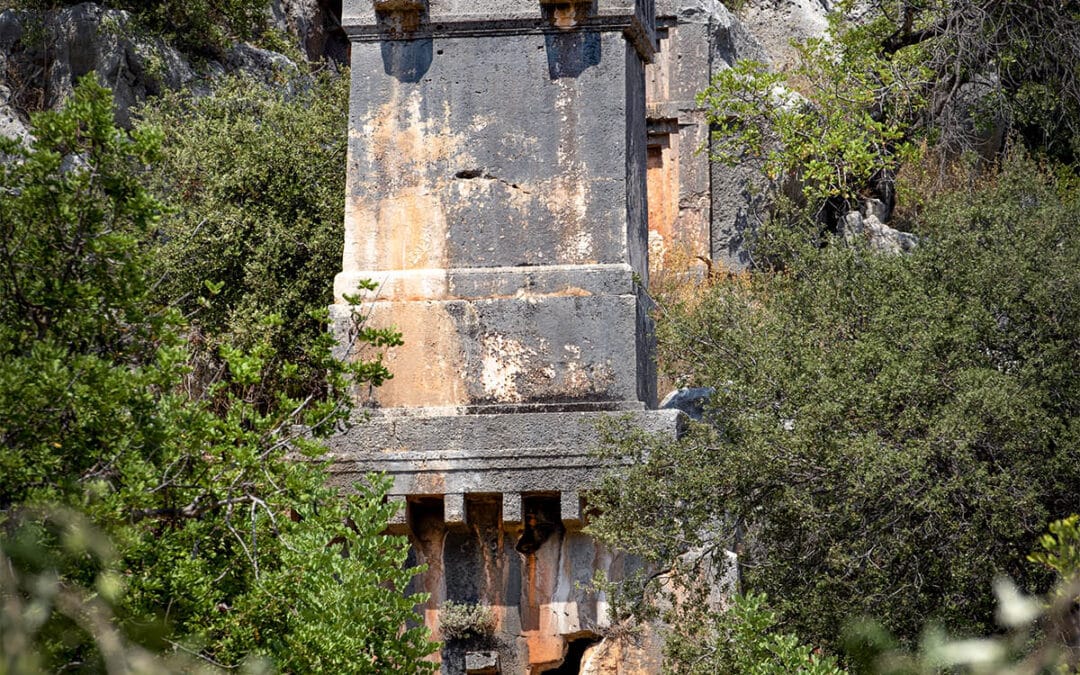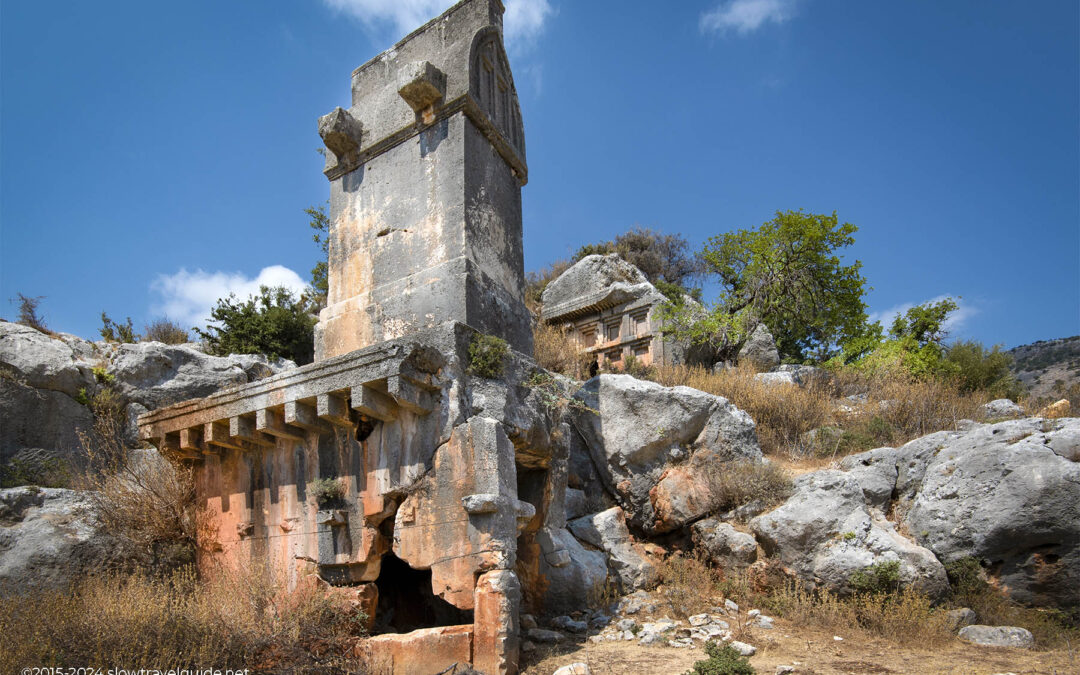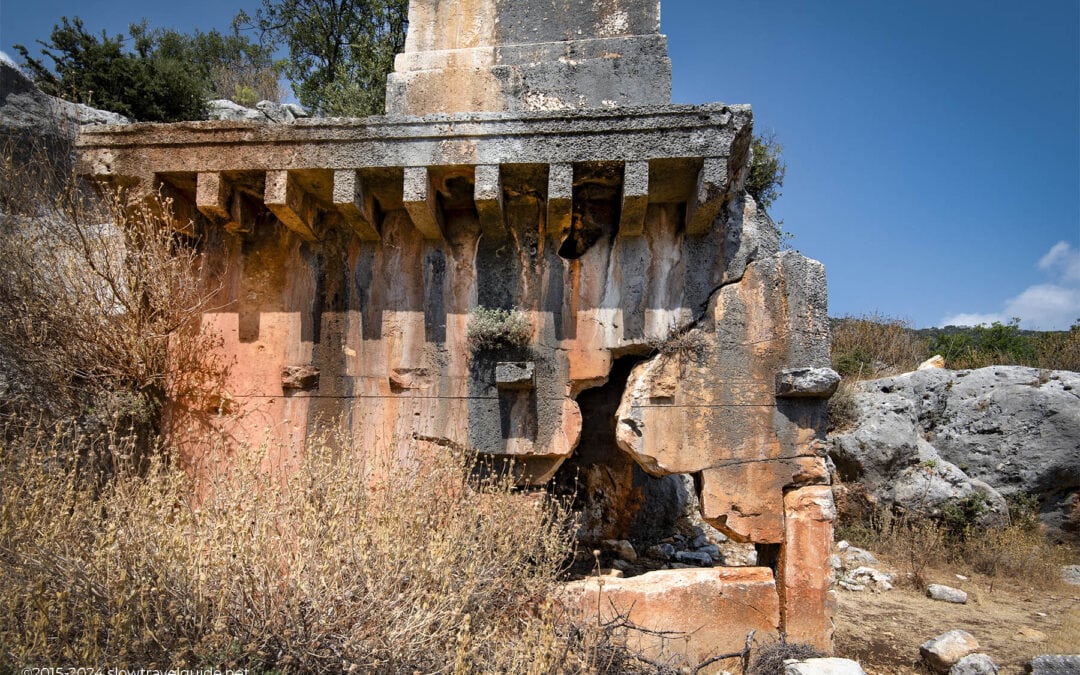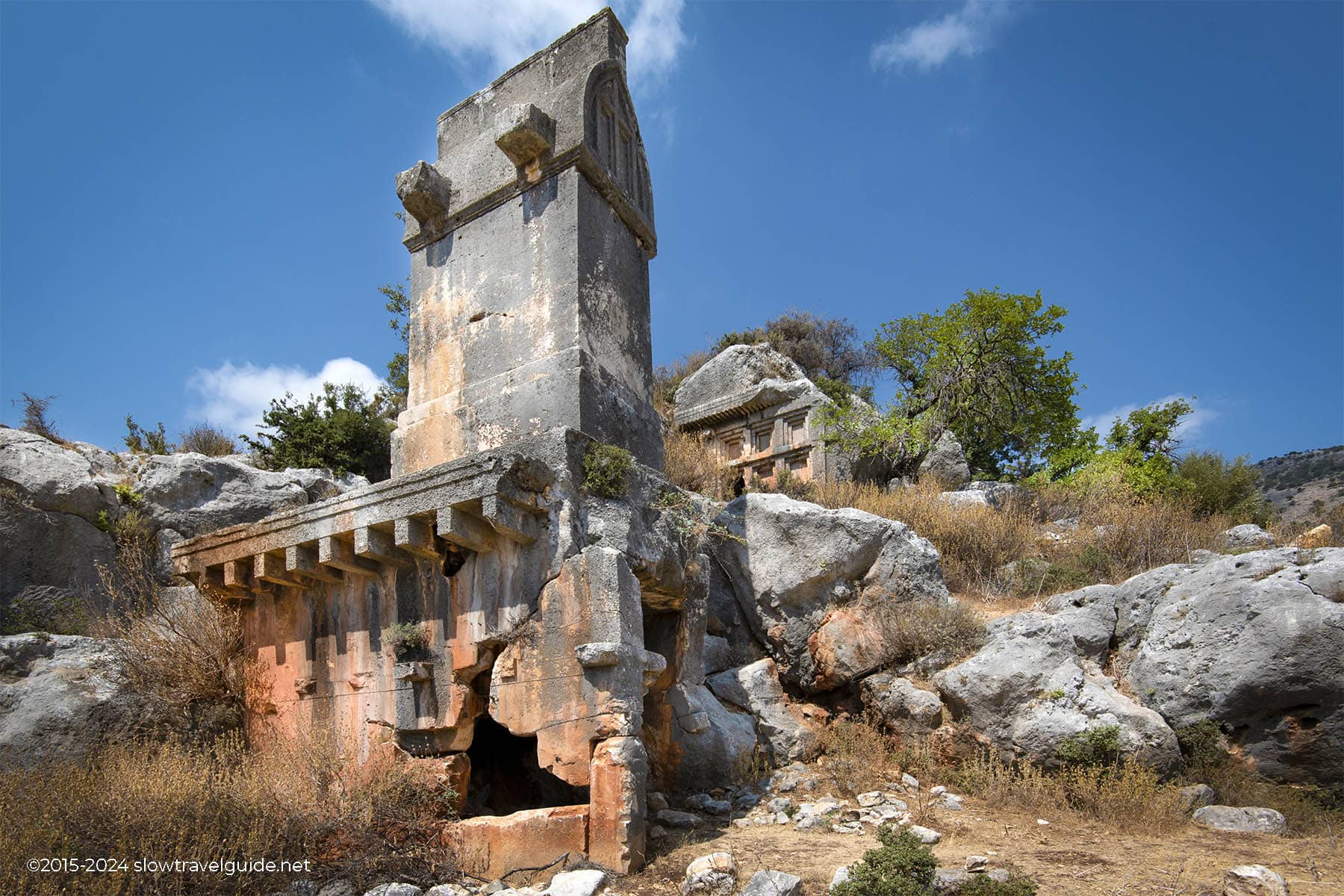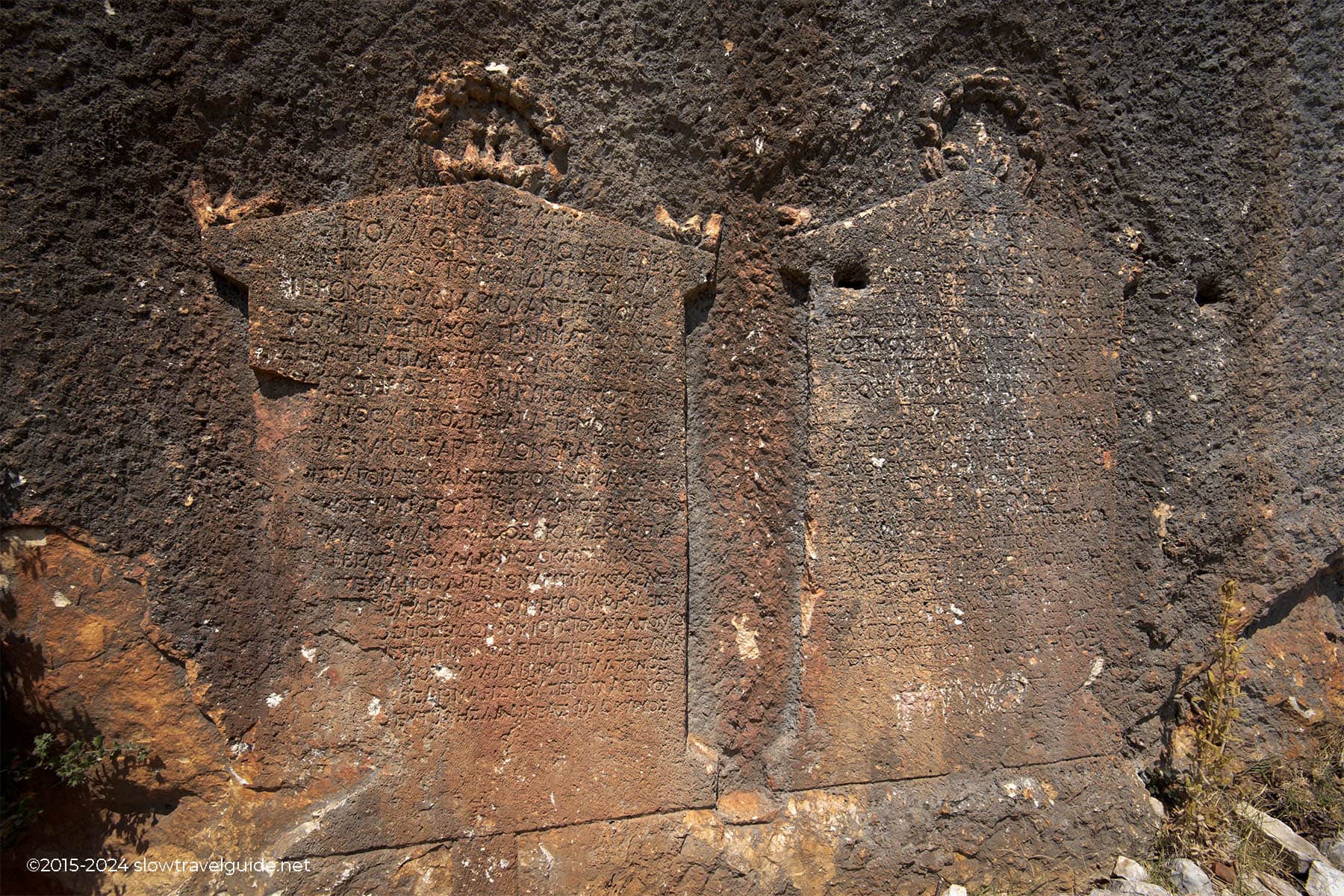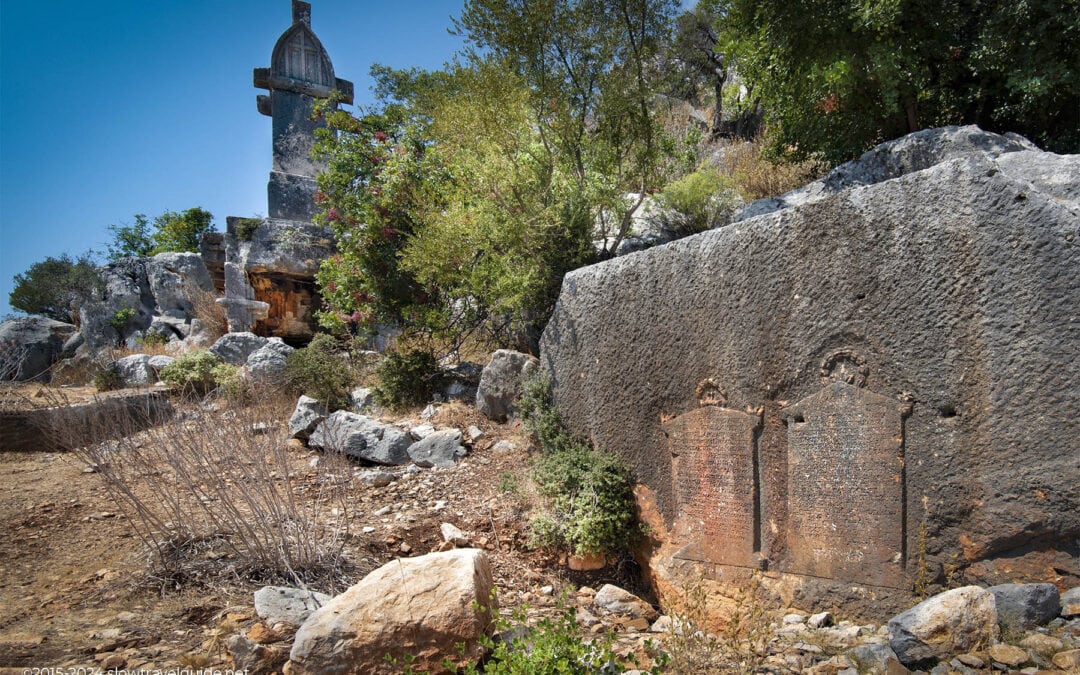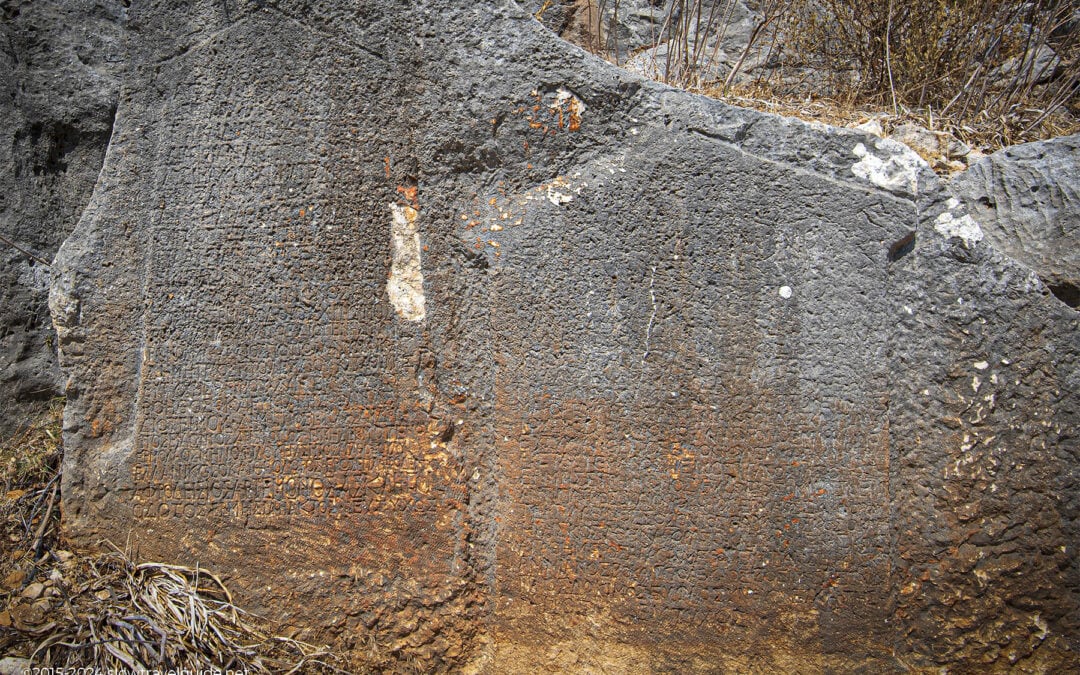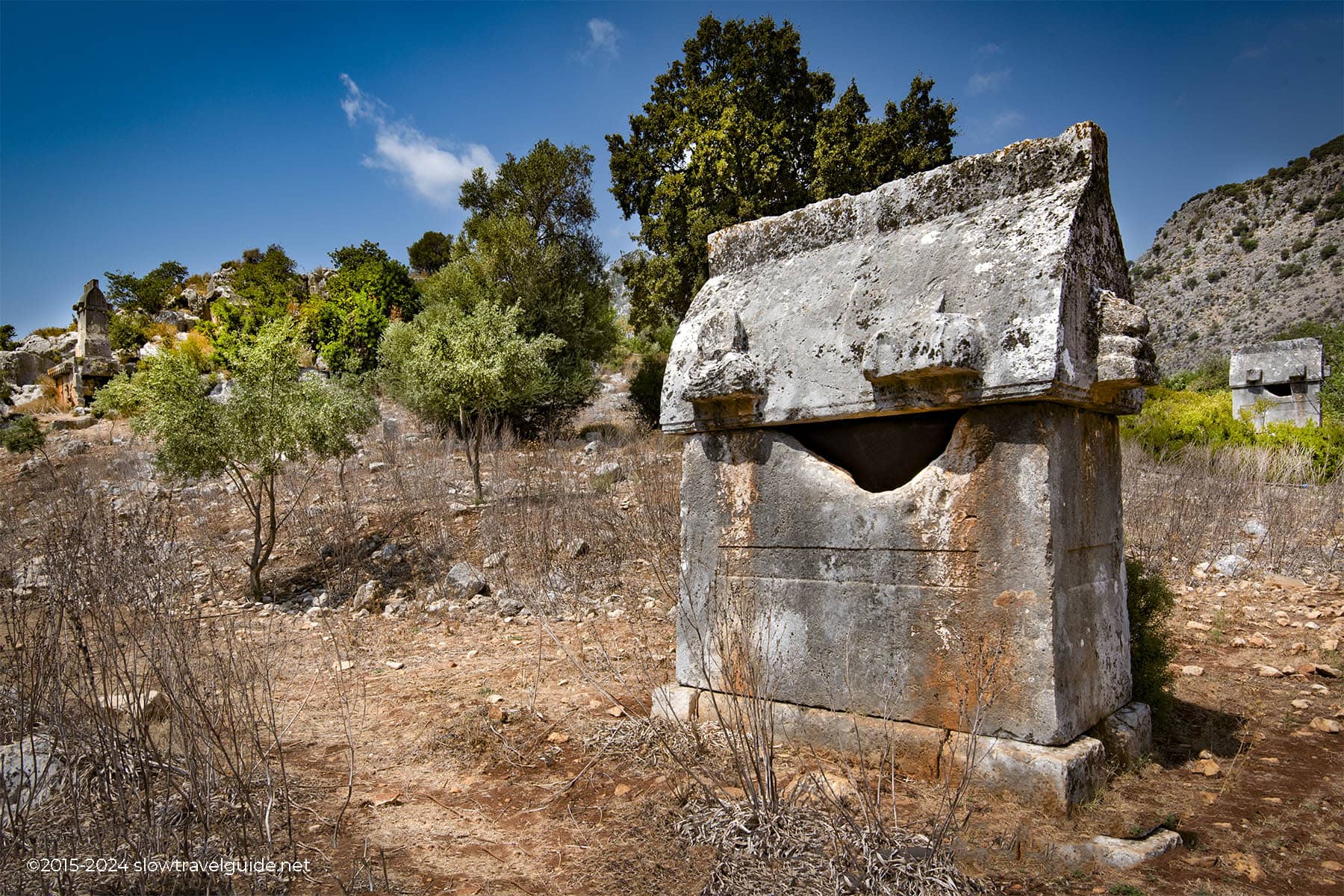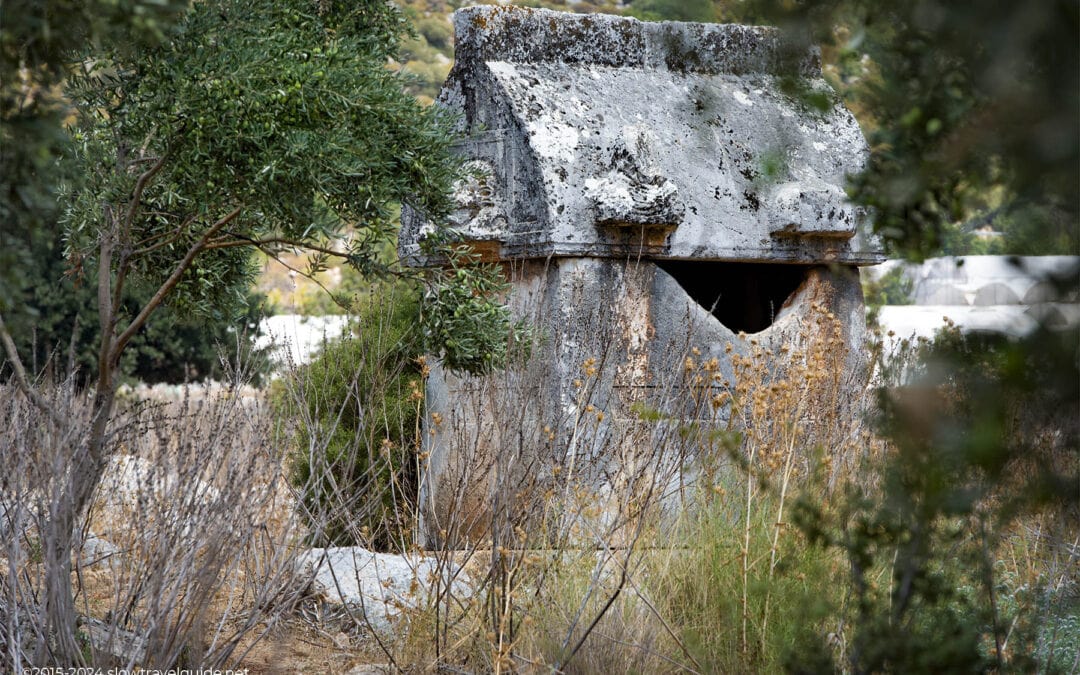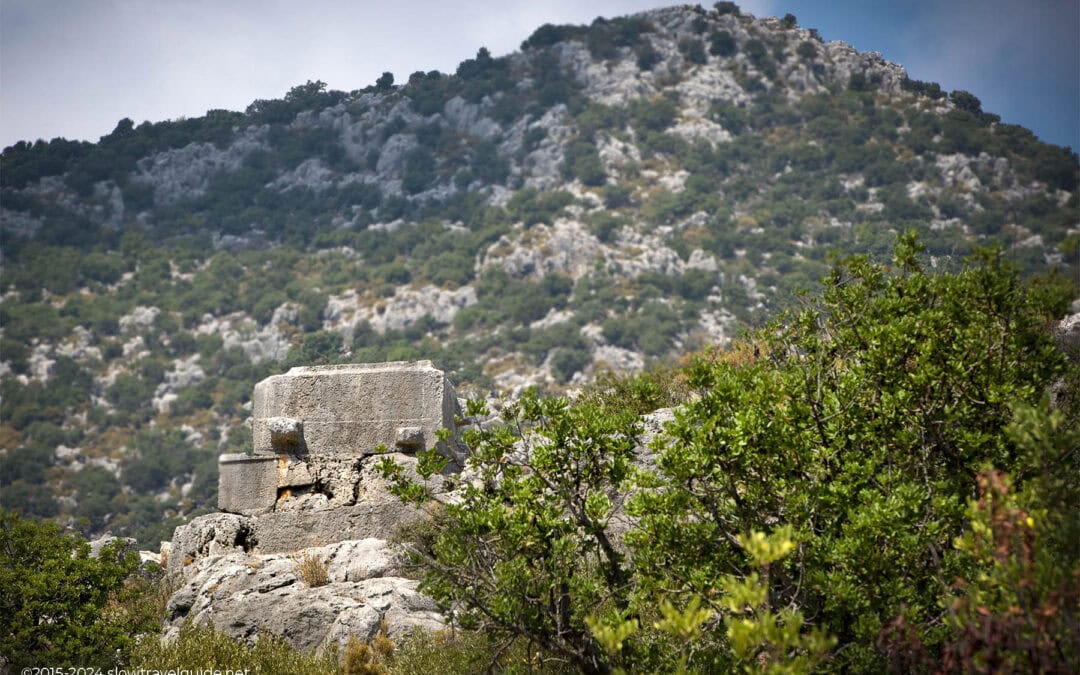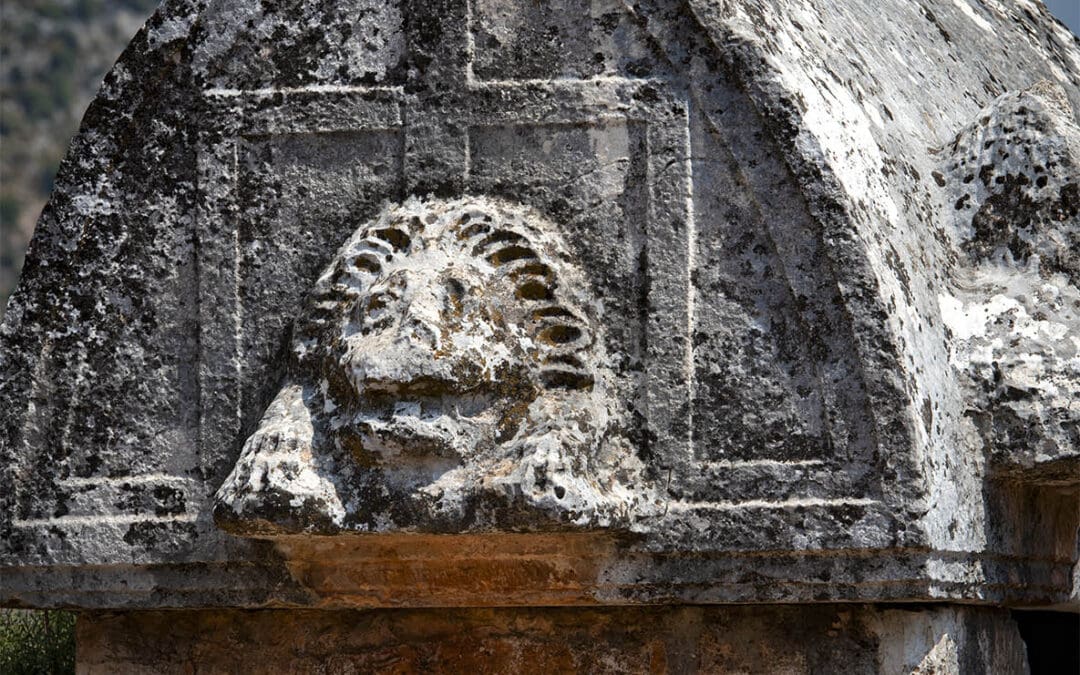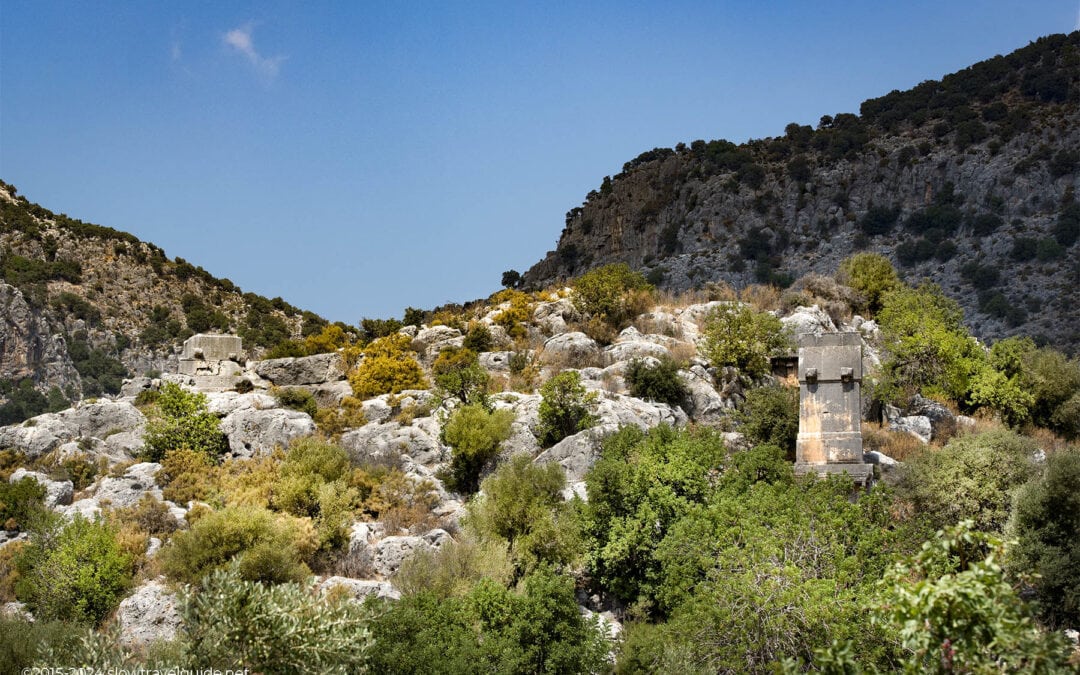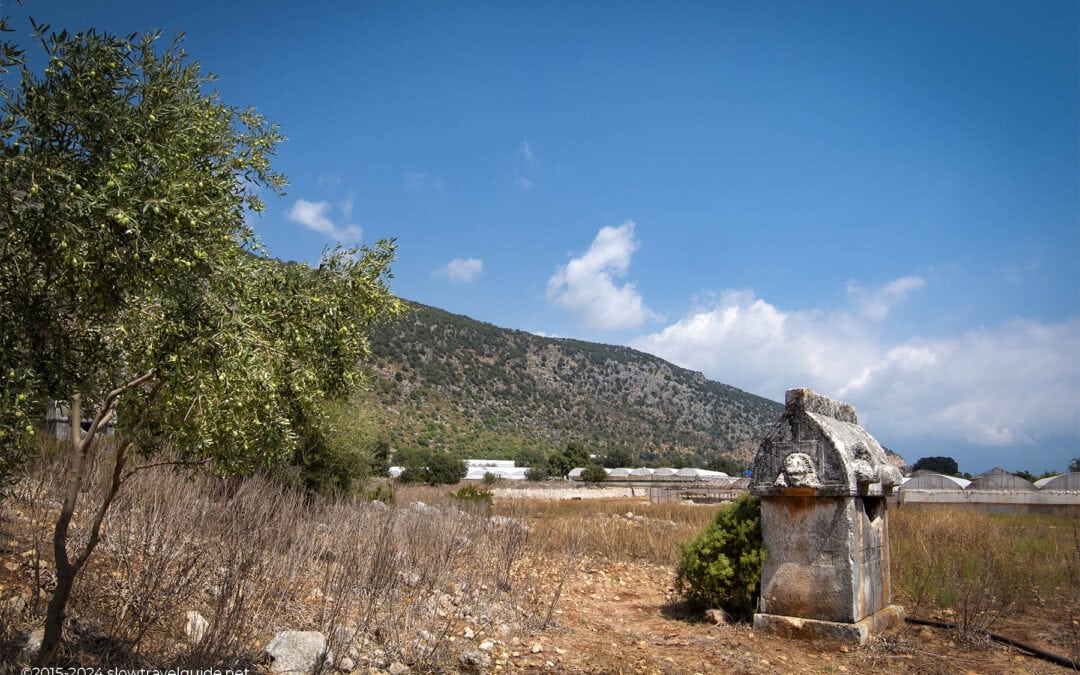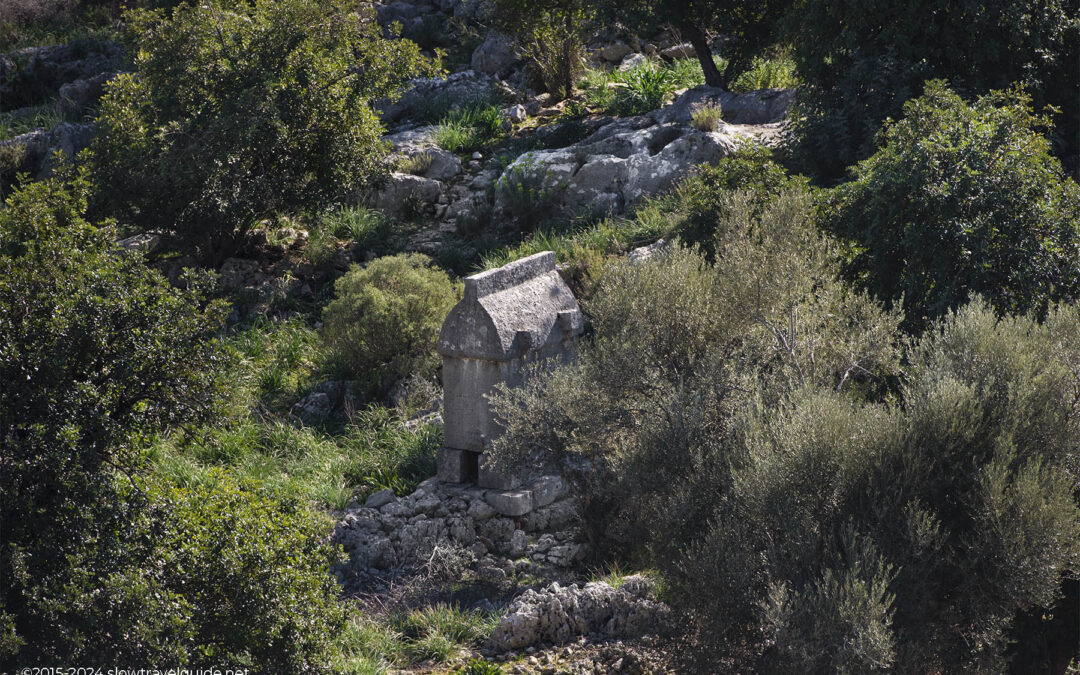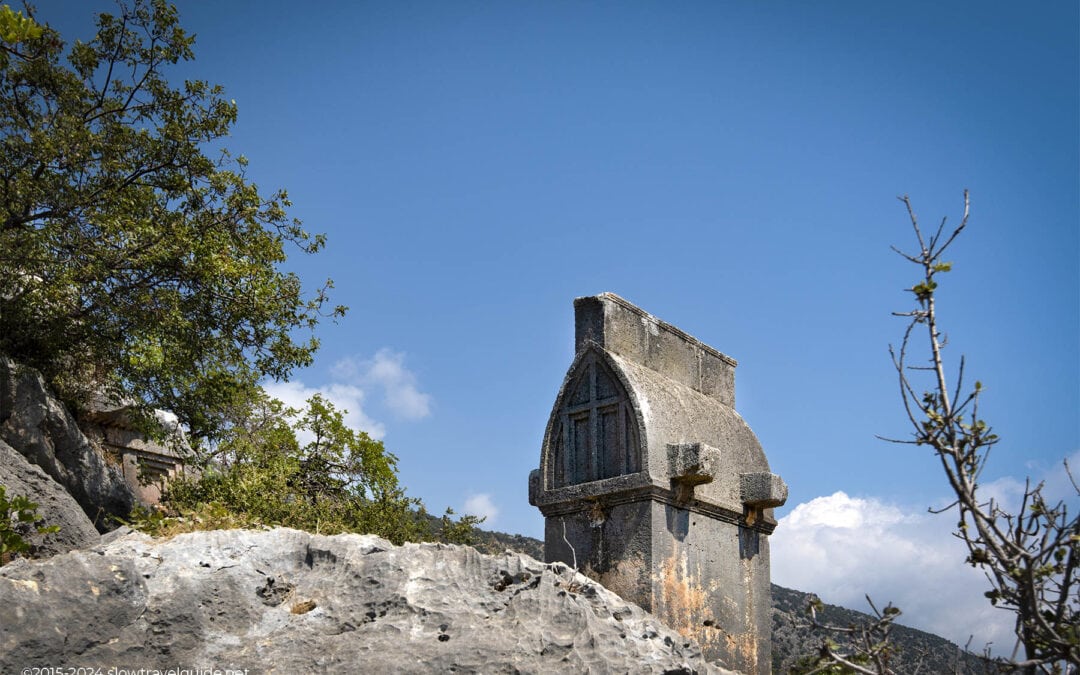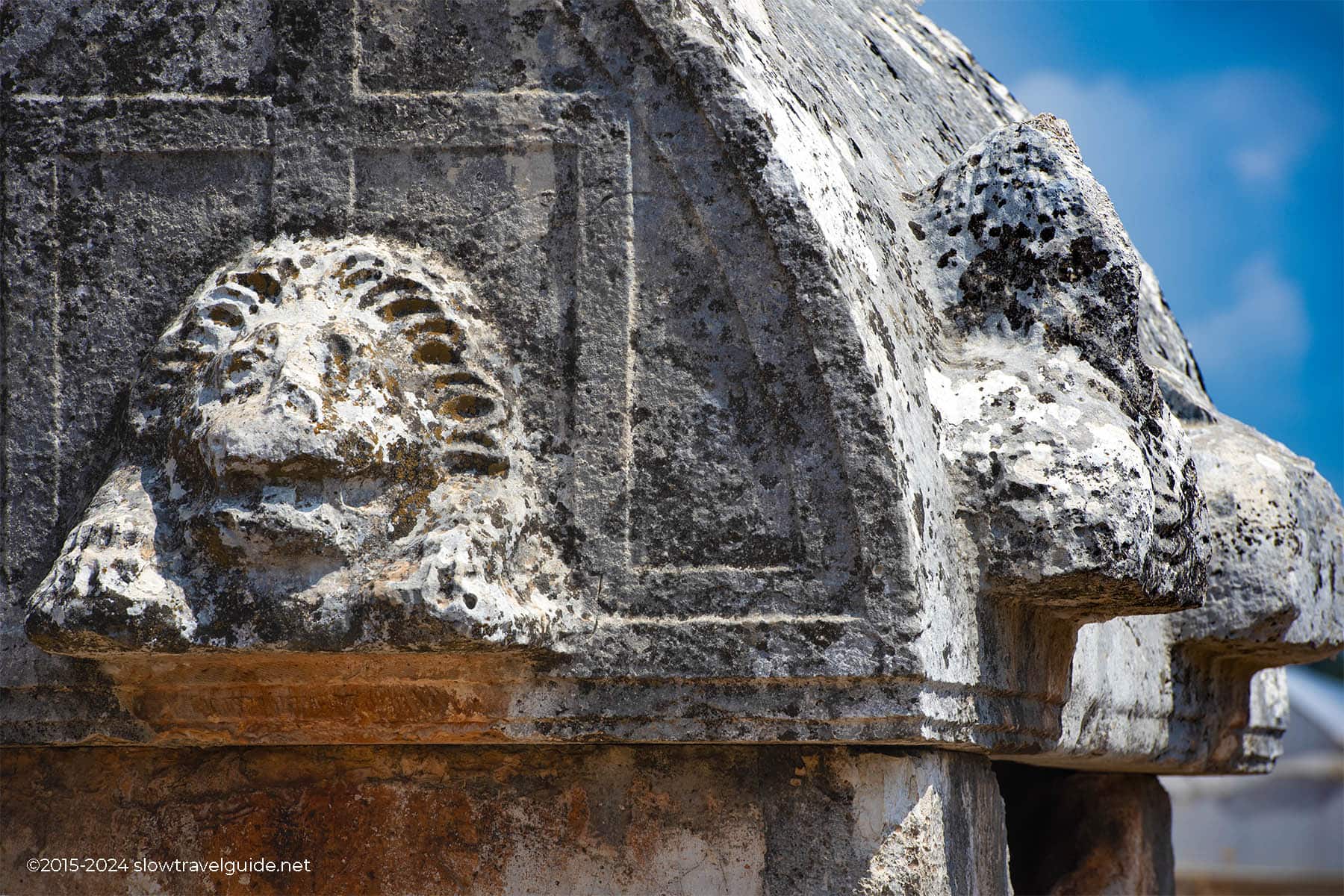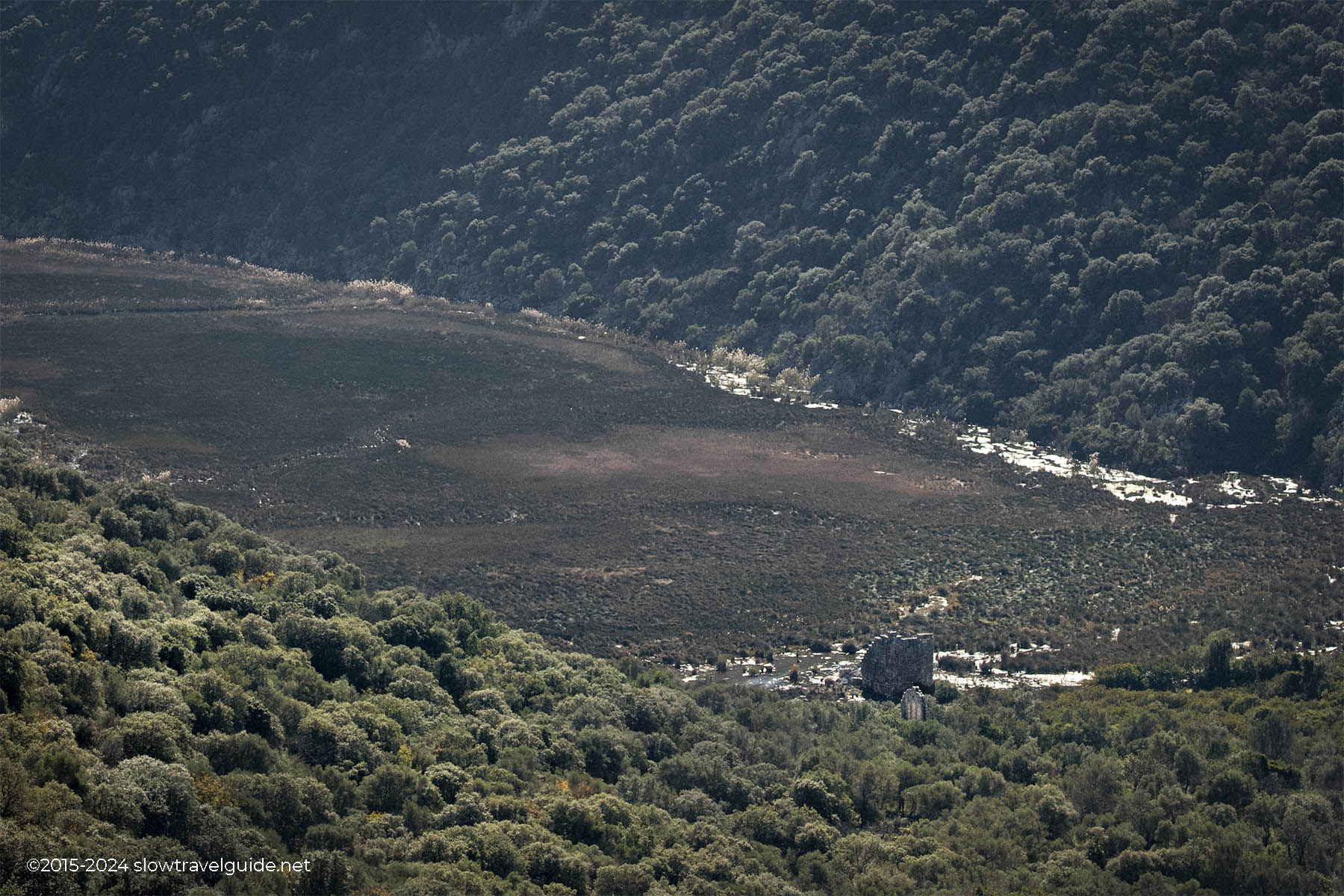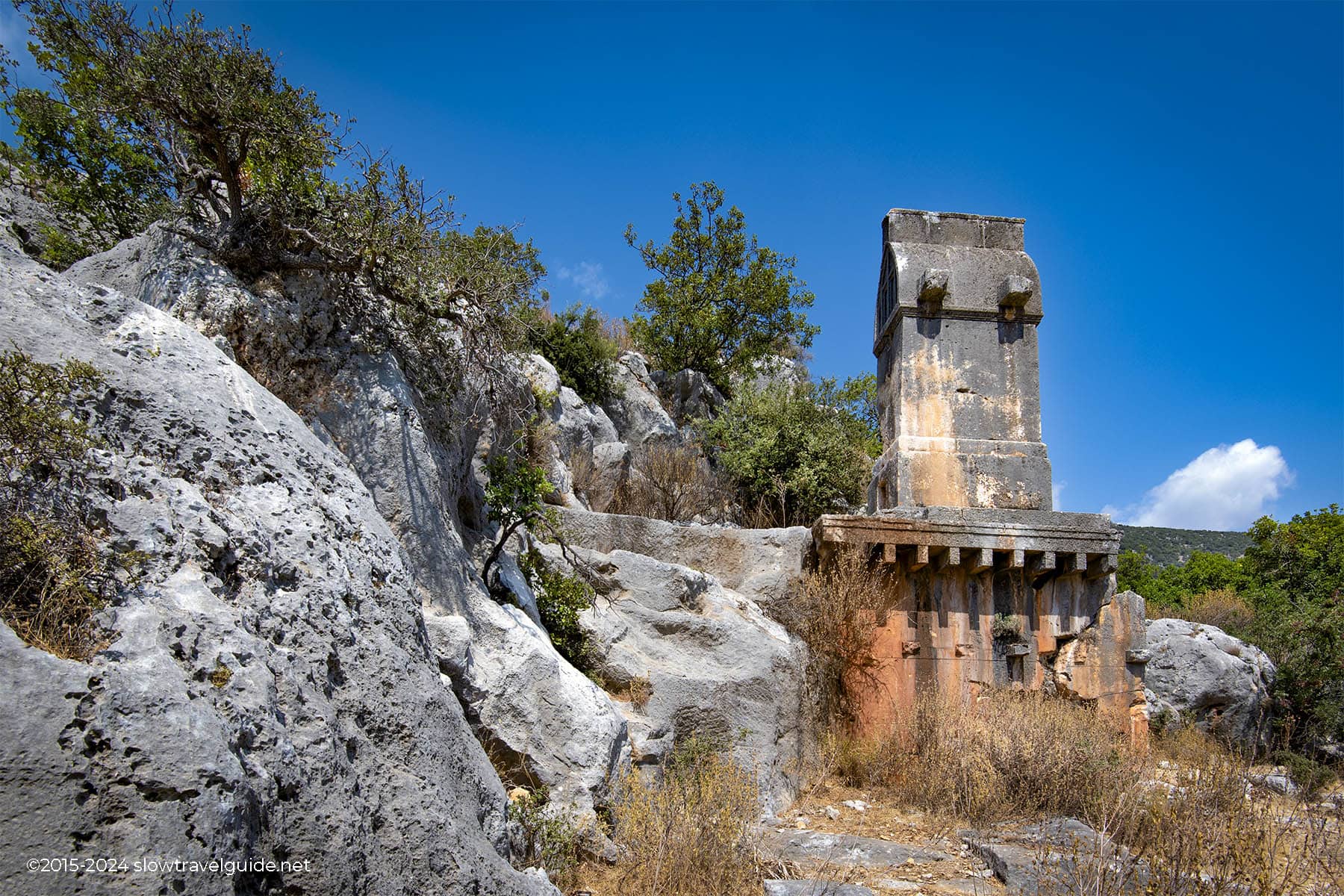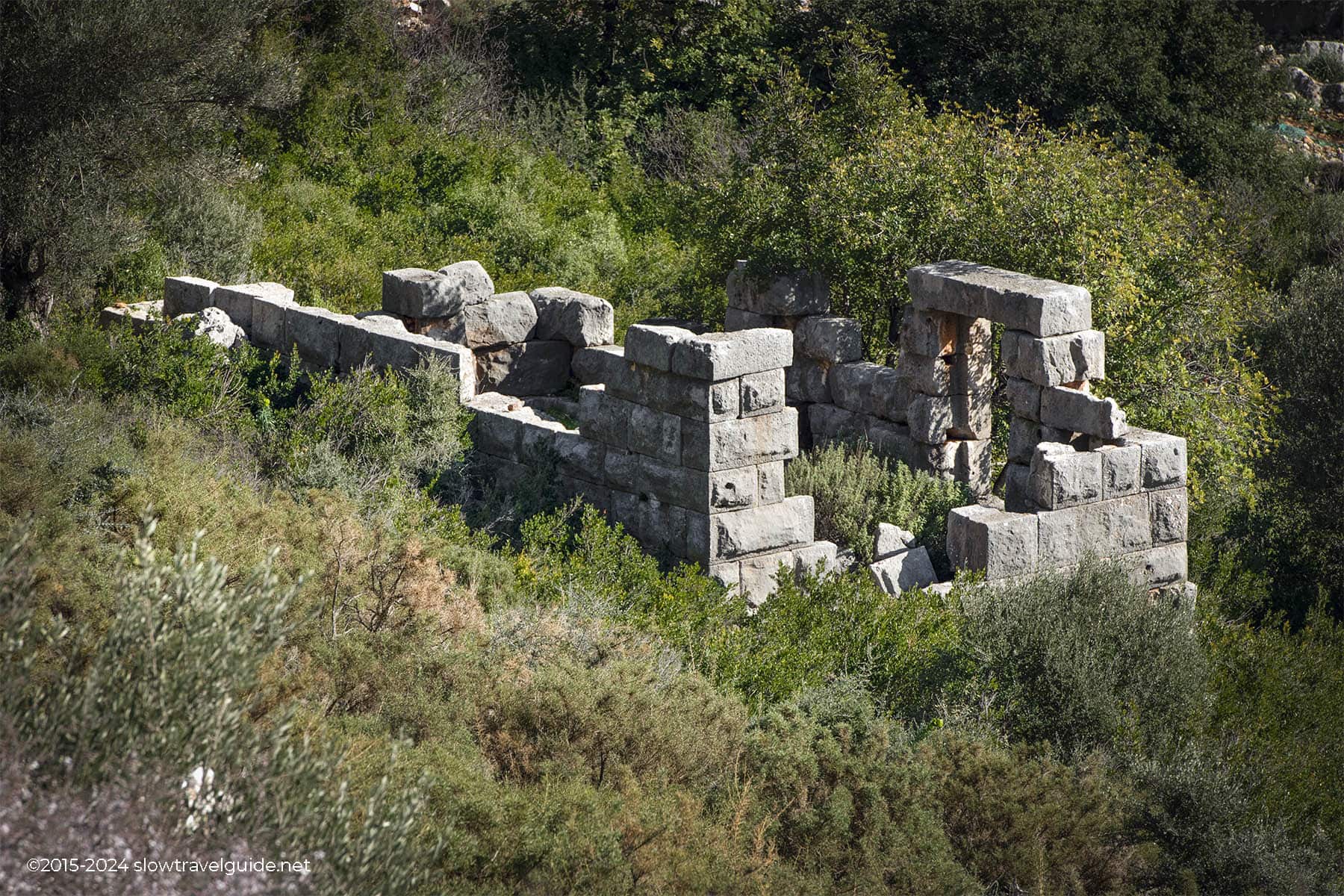SURA TOMBS
By Slowtravelguide
SURPRISING SURA & ITS UNUSUAL FISH ORACLE
For most travellers, Sura (or Soura, as it is called in certain sources) is little-known or even undiscovered. This Lycian settlement is split in half by the main road that connects Demre and Kaş, and it is located around 5 km from the ancient site of Myra, of which it was a dependency. It’s possible that you’ve previously driven by it and observed the exquisite sarcophagus that presides over the tiny Necropolis.
But Sura is more than what first meets the eye; in classical antiquity, this was a site where people came to seek a prophecy from the gods. Here, the focal point for people asking the priests for counsel was a fish oracle. See this article for a startling look into Sura.
4th Century Bc Pillar And Chamber Tomb Combi
Sura Necropolis Seen From The Road
A SMALL BUT BEAUTIFUL NECROPOLIS
Sura rises to a height of roughly 100 metres above sea level on one side and skirts a shady inlet on the other. The little Necropolis of Sura is located there at the summit and is home to an interesting assemblage of Lycian rock tombs, sarcophagi, and stelai bearing Lycian inscriptions.
One of the more impressive graves is visible from the road. It’s a kind of pillar tomb set over a chamber tomb carved out of rock, resembling the well-known ones in Xanthos. This extremely well-preserved tomb is believed to date to the 4th or 5th century BC.
Near this pillar tomb, you’ll notice a few fascinating rock-carved stelai inscribed with lists of names of priests attached to the cult of Apollo Surius. The consensus is that Sura was a sacred precinct, only ever inhabited by priests. You’ll find several of the stelai on site.
The Rock Cut Stelai And Their Lycian Inscriptions
Check out the beautiful Lycian sarcophagi a little further away, some of which have a lid decorated with lions that seem to be coming from within the tomb, paws & head jumping out first. Take the time to wander around, and you’ll discover a whole range of more modest-looking but still spectacularly well-preserved Lycian sarcophagi.
Wandering Around Sura’s Necropolis
Quite amazing bas reliefs
SURA’S FAME: THE TEMPLE OF APOLLO & THE FISH ORACLE
While we have little visuals to support this section due to the wet conditions of the swamp surrounding the fish oracle and the Temple of Apollo at Sura, we do want to share its fascinating story with you. After all, we are convinced we shall return there at a later date to make more photos of that specific area.
Situated on the edge of a marshy inlet that formerly served as Sura’s harbour is a modest temple dedicated to Apollo Surius. There are still devotional inscriptions on its walls honouring Sozon, a local Anatolian divinity identified with Apollo. The remnants of a Byzantine church, constructed after the pagan temple was abandoned, can be found close by.
The operation of the oracle is explained by a number of tales and anecdotes. All include using fish to determine whether omens were favourable or unfavourable. The most widely recognised explanation for the Sura fish oracle is that the fish materialised as a maelstrom created by the priests. There used to be springs that would naturally flood up in the water, creating this whirlpool.
These processes are still evident today, with the sea reduced to a stream. The water is swirled by the springs, forming “a well of seawater.”
According to legend, priests would toss spits filled with meat chunks into the vortex. The pool would then fill up and a variety of fish would show there. The species and their habits served as the basis for drawing the oracle. Researchers think that by regulating the flow of water from the sizable spring, the priests were able to regulate the pool’s expansion.
The Apollo Temple Remains At Sura
Visiting Sura’s Necropolis is easy. This place isn’t fenced off and lies right next to the main Demre-Kaş road, just above Andriake. You’ll find the exact location on the map below this post.
Technically speaking, this isn’t even an ancient site, but it is worth visiting! If you’re on a tight schedule, just pull over for a quick stop to check out the magnificent pillar tomb and the rock-cut chamber tomb below it.
One of the observation towers
If you have a little more time, and you’re wearing your walking shoes, head over to the inlet below to admire the Temple of Apollo Surius, the Byzantine church, and the fish oracle. It’s a lovely, albeit steep walk down some beautifully rock-carved steps before you reach the ruins. You won’t be disappointed, as – besides the ruins – this is also a lovely stretch of nature.
You’ll be glad to learn that this is also a dot on the Lycian Way map. So, for anyone aiming to walk the Lycian, or a part of it, make sure to allocate some time to check this place out.
Gerga
Ready to embark on a journey filled with intrigue and wonder? Look no further than Gerga, a hidden sanctuary nestled in the mystical Latmos Mountains of Caria.
Birgi
Birgi, you’ve probably never heard of it. And yet here we are claiming this may well be one of the prettiest villages in Turkey. Technically speaking, Birgi isn’t a village, it’s a small town not too far away from Ödemiş in the province of Izmir
Knidos
Some ancient ruins seem to have it all: a spectacular setting, two harbours, a lighthouse that’s been bombarded with pictures, and some good stories to end it all. Knidos falls into this category.
© 2016-2022 All rights reserved by slowtravelguide.net.
The content of this website is copyright protected and the property of slowtravelguide.net.No part of this website may be reproduced in whole or in part in any manner without the written permission of the copyright owner.
Copyright ©2016-2022 Tüm hakları saklıdır. Bu (slowtravelguide.net.) web sitesinin içeriği koruma altındadır ve slowtravelguide.net.Buradaki hiçbir içerik (yazı,fotoğraf,video vb.) izinsiz olarak kopyalanamaz, alıntı yapılamaz,başka yerde yayınlanamaz.

